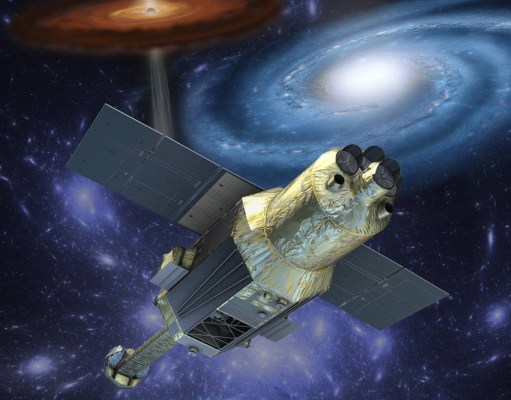This week the Japan Aerospace Exploration Agency (JAXA) successfully launched a new space observatory designed to study black holes, dying stars and the history of galaxy clusters. The X-ray Astronomy Satellite, known as ASTRO-H, will be able to detect X-rays more than 10 times fainter than its telescope predecessor, Suzaku.
ASTRO-H was launched on the Japanese launch vehicle H-IIA from Tanegashima Launch Center on Wednesday, February 17th at 3:45 am EST. Within hours, the satellite deployed its solar arrays and was functioning normally.
It’s tradition for Japan’s astronomy satellites to be given a provisional name before launch and be renamed once they’re in orbit. After its successful launch, JAXA announced ASTRO-H was renamed to Hitomi, a Japanese word that refers to an eye’s pupil, which is like an aperture collecting light for an eye.
Celestial bodies in the universe emit radiation in many different forms. Perhaps the most obvious form is the kind we can see with our own eyes – visible light. The Hubble Space Telescope, for example, was an optical telescope that collected visible light and could study the universe in the visible spectrum.
In contrast, Hitomi is designed to study celestial bodies that emit X-rays. X-rays are a form of extremely high energy radiation and are generated by high energy events in the universe like black holes, neutron stars, supernova explosions and galaxy clusters. While visible light spans an energy range from 2 electron volts (eV) to 3 eV, Hitomi is equipped with 4 co-aligned X-ray telescopes that are capable of detecting 300 eV to 600,000 eV.
Hitomi is the sixth in a series of JAXA X-ray astronomy satellites. With technology improvements and state-of-the-art instruments, Hitomi will be able to provide a higher-resolution image of the universe in the X-ray spectrum than ever before. This is achieved with precise pointing (looking at a very small section of the sky) and the ability to measure and distinguish a wide range of frequencies in the X-ray spectrum.
The astronomy satellite was an international project lead by JAXA with contributions from Europe, Canada and NASA. In return for their contributions, space agencies are able to compete for a certain percentage of observational time on Hitomi.
As technologies improve, scientists are able to view the universe in ways they’ve never seen before. With Hitomi, astronomers will be able to view the X-ray side of the universe with higher precision and resolution than they’ve achieved with prior telescopes.
As data comes in from Japan’s latest X-ray satellite, astronomers around the world hope to learn about the evolution of the largest structures in the cosmos, the behavior of black holes and the matter around them, and the internal structure of neutron stars.
